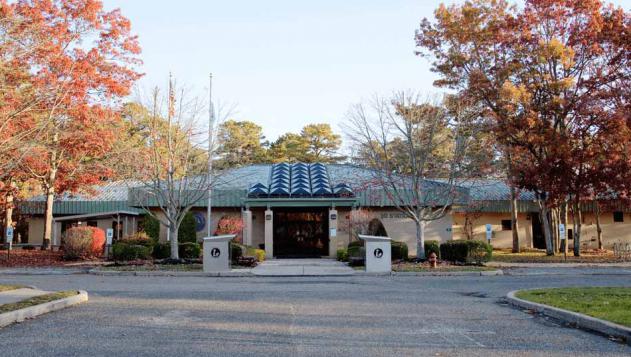The earliest inhabitants of the area now known as Berkeley Township were the Unalachtigo (the People who live near the ocean), a sub-tribe of the Lenni-Lenape. The People were nomadic and moved about in small bands of about a dozen families. The Cedar Creek was a great source of oysters for them.
White Europeans from England and Holland first settled near waterways, making a living by fishing and boating on the rivers, the bay, and the ocean, and sometimes less legitimately in privateering and smuggling and by looting shipwrecks. Cedar Creek was the center of a timber industry, and sawmills used the creeks and tributaries of the Toms River. At one time, the Berkeley cranberry bogs produced the largest crops in the state, two of which still remain in Double Trouble State Park.
“Bayville” was a post office designation assigned in 1870, and on March 31, 1875, the State of New Jersey officially set off the Township of Berkeley from the Township of Dover. The coming of the railroad around 1881 accelerated development in Pine Beach, Beachwood, Ocean Gate, and Seaside Park, which began as development communities. Prospective buyers there received free train rides from Newark, Philadelphia, and New York. Barnegat Park, later called Pinewald, was also planned, but did not develop until the 1920s when the Royal Pines Hotel was built, only to fail during the Great Depression.
Berkeley Township consists of approximately 41.9 square miles, located in the central part of Ocean County. It is geographically divided into three communities. One community runs along the Barnegat Bay and along both sides of Route 9 from the Toms River in the north, to Cedar Creek, the border line with Lacey Township to the south. Another community in the far northwest corner of the township includes two large older adult housing developments, Holiday City and Silver Ridge. The third community includes the southern half of Pelican Island in Barnegat Bay, South Seaside Park, and Island Beach State Park along the Atlantic Ocean.
The area east of Route 9 is considered wetlands, and the land west of the Garden State Parkway is in the Pinelands. Both, therefore, fall under federal and state requirements for development in such areas. All areas zoned residential are nearly completely built, and any further development is limited.
Created by Linda Feaster; revised by Christi Aldellizzi, Berkeley Library, 2/2017.



